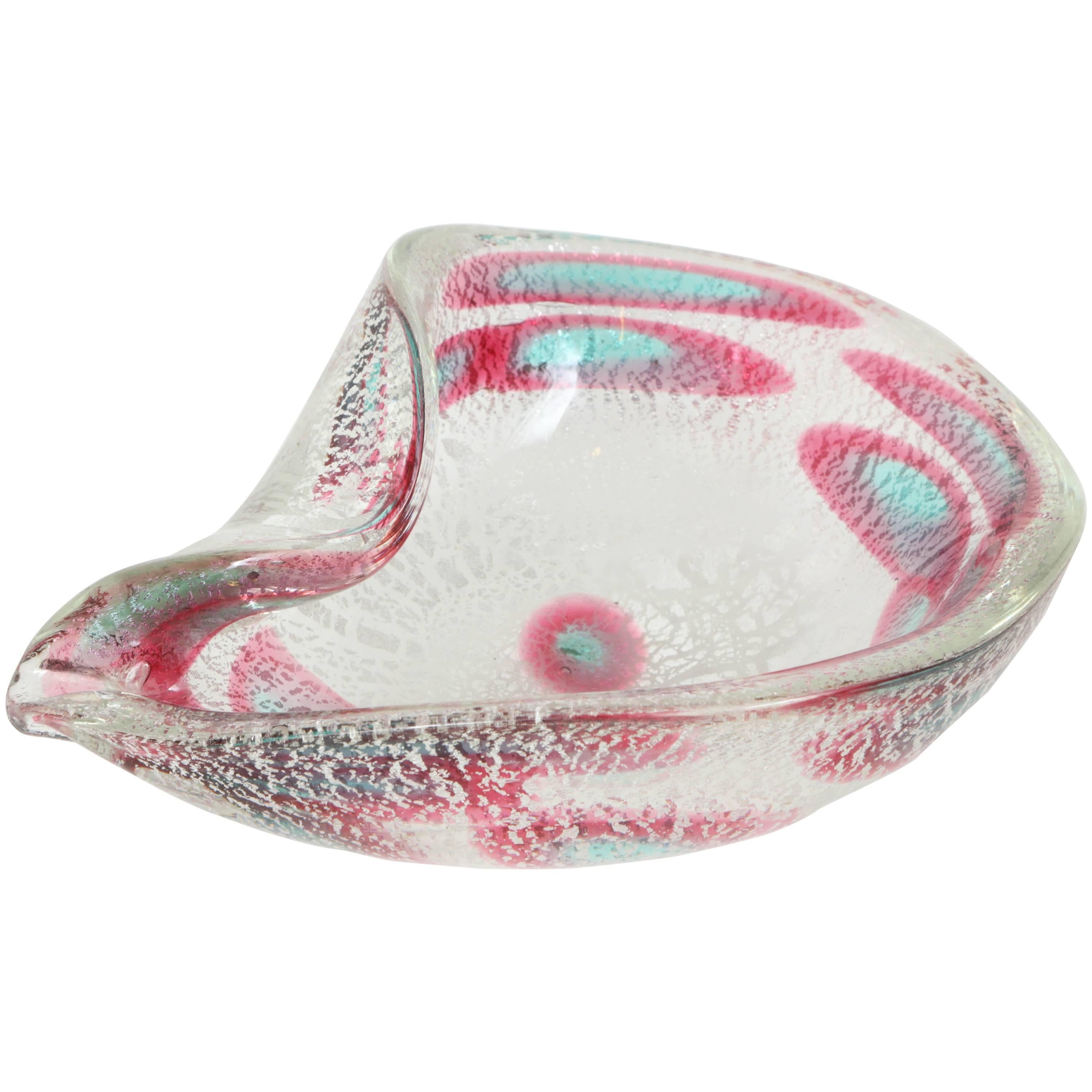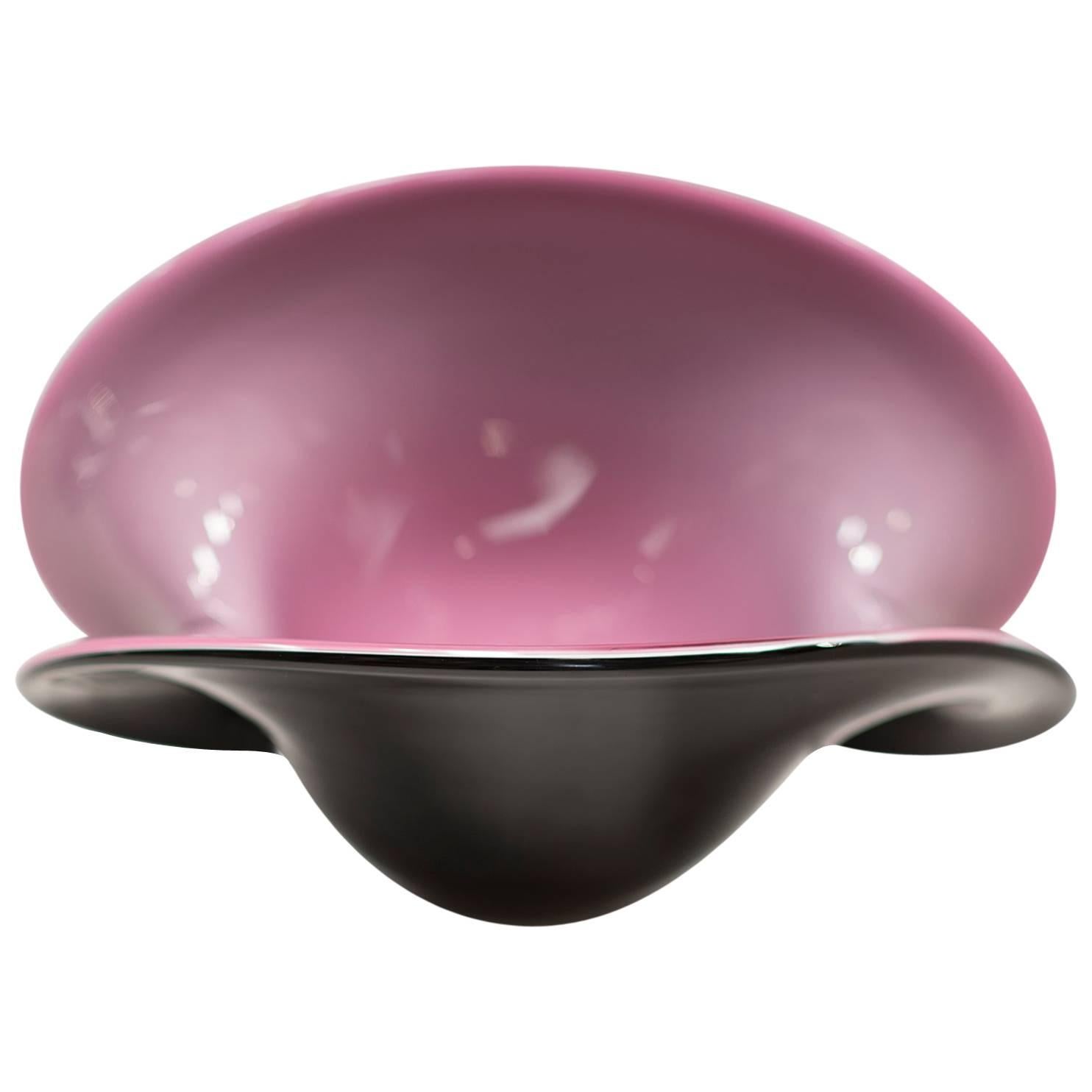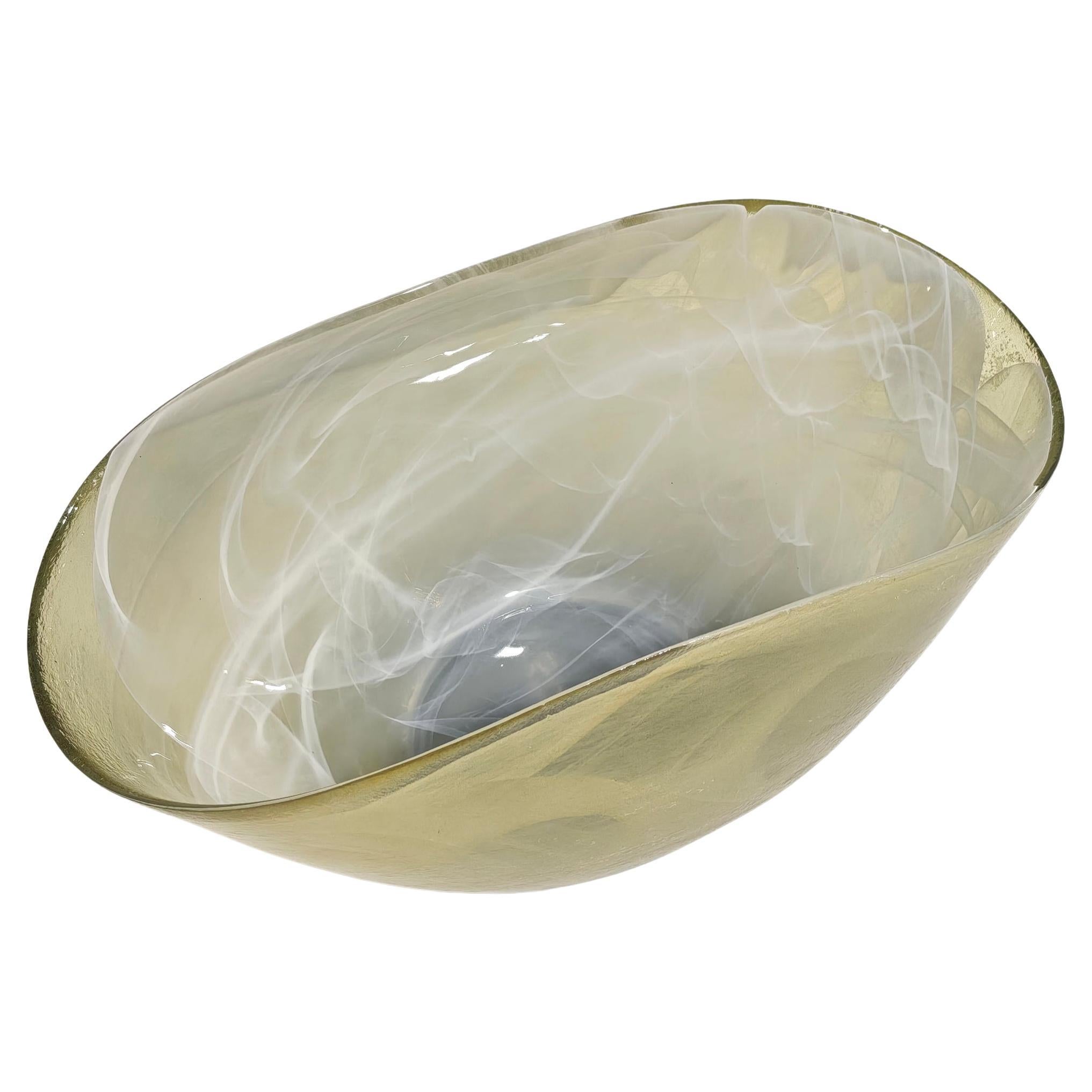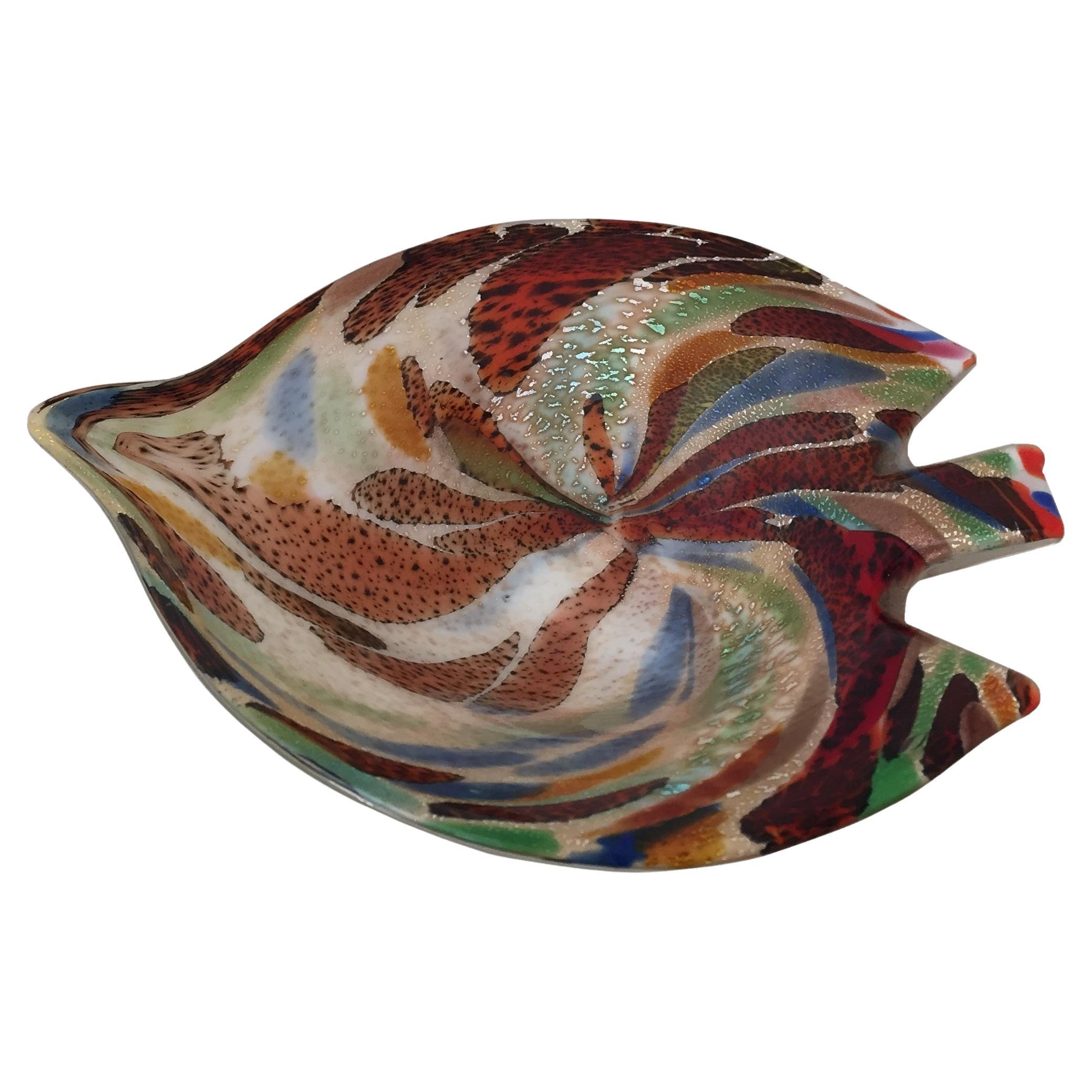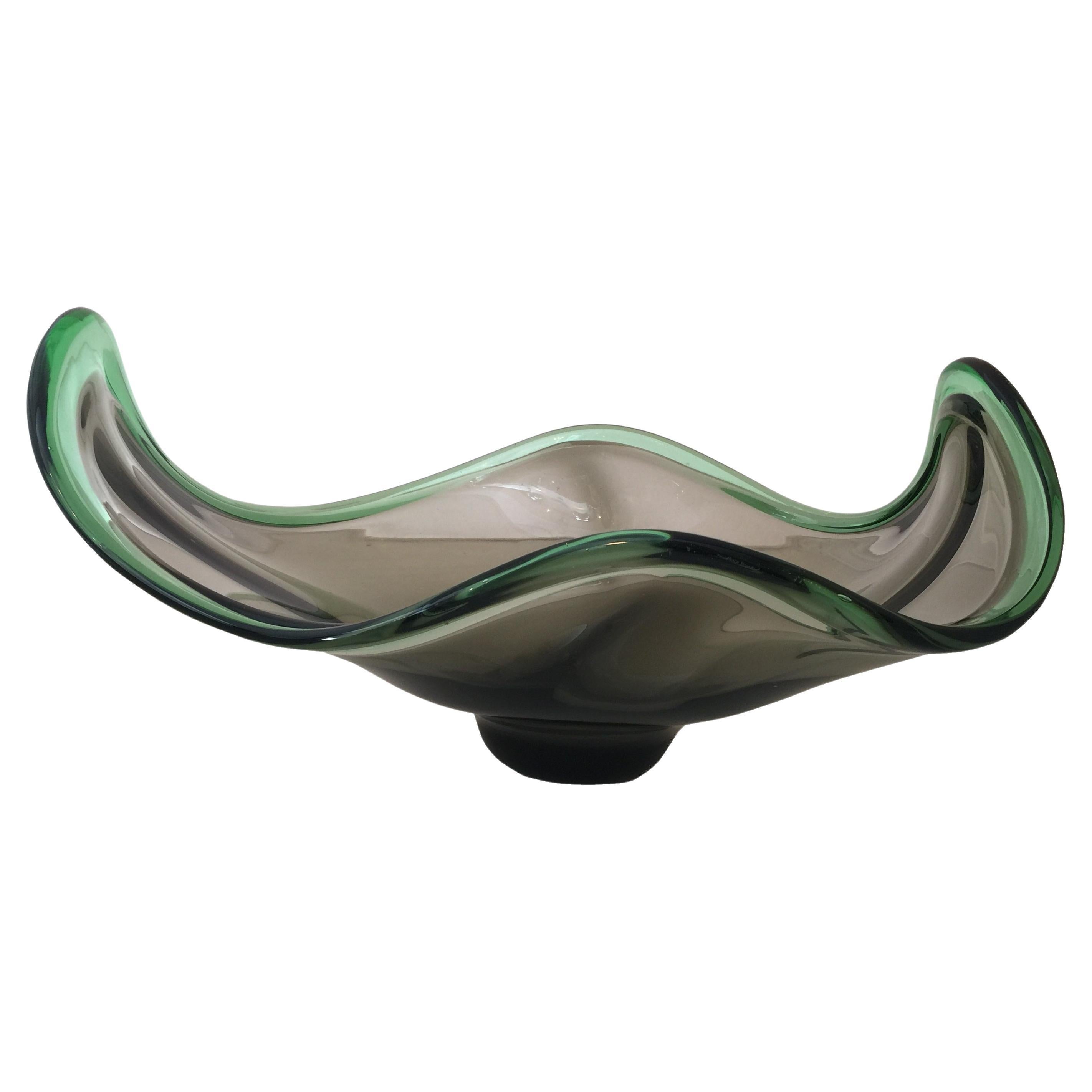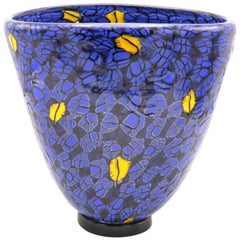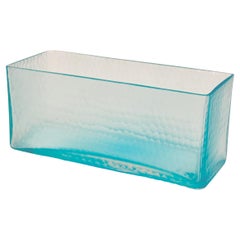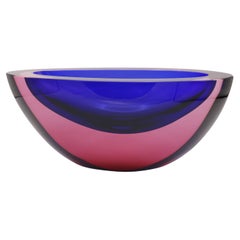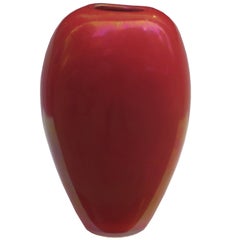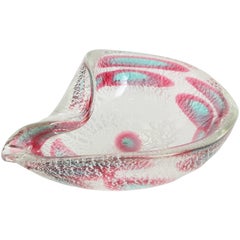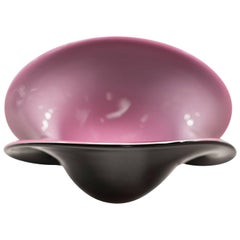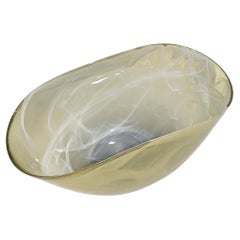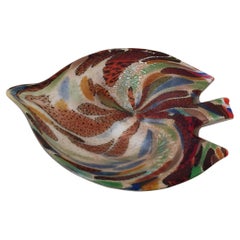Items Similar to Decorative Murano Glass Shell by Guido Ferro , Italy 1980's
Want more images or videos?
Request additional images or videos from the seller
1 of 7
Decorative Murano Glass Shell by Guido Ferro , Italy 1980's
$5,800
£4,364.38
€5,045.55
CA$8,189.77
A$8,880.11
CHF 4,712.57
MX$109,369.79
NOK 58,409.30
SEK 55,124.95
DKK 37,661.23
About the Item
Decorative Murano Glass Shell by Guido Ferro. Textured outer
shell with colorful smooth surface to the inner shell.
Label Undeneath: Guido Ferro Collection Murano
- Dimensions:Height: 6.75 in (17.15 cm)Width: 16.75 in (42.55 cm)Depth: 9.25 in (23.5 cm)
- Style:Modern (Of the Period)
- Materials and Techniques:
- Place of Origin:
- Period:1980-1989
- Date of Manufacture:1980's
- Condition:Wear consistent with age and use.
- Seller Location:New York, NY
- Reference Number:Seller: 120561stDibs: LU1025439537922
About the Seller
5.0
Recognized Seller
These prestigious sellers are industry leaders and represent the highest echelon for item quality and design.
Platinum Seller
Premium sellers with a 4.7+ rating and 24-hour response times
Established in 1989
1stDibs seller since 2014
136 sales on 1stDibs
Typical response time: 1 hour
- ShippingRetrieving quote...Shipping from: New York, NY
- Return Policy
Authenticity Guarantee
In the unlikely event there’s an issue with an item’s authenticity, contact us within 1 year for a full refund. DetailsMoney-Back Guarantee
If your item is not as described, is damaged in transit, or does not arrive, contact us within 7 days for a full refund. Details24-Hour Cancellation
You have a 24-hour grace period in which to reconsider your purchase, with no questions asked.Vetted Professional Sellers
Our world-class sellers must adhere to strict standards for service and quality, maintaining the integrity of our listings.Price-Match Guarantee
If you find that a seller listed the same item for a lower price elsewhere, we’ll match it.Trusted Global Delivery
Our best-in-class carrier network provides specialized shipping options worldwide, including custom delivery.More From This Seller
View AllVittorio Ferro 'Murrina' Murano Glass Vase
Located in New York, NY
A Vittorio Ferro 'Murrina' Murano glass vase Clear glass
with fused marbled murrhine in hues of blue and yellow.
Marked: Ferro Vittorio.
Category
Antique 1660s Italian Modern Vases
Materials
Art Glass
Elegant Venini Murano Glass Vase (1950s, Italy)
Located in New York, NY
This beautiful rectangular glass vase, crafted by the renowned glass artist Paolo Venini in the 1950s. It embodies the finest Murano craftsmanship featuring a striking turquoise colo...
Category
Mid-20th Century Italian Vases
Materials
Art Glass, Murano Glass
" Sommerso " Art Glass Vase attributed to Falvio Poli
Located in New York, NY
" Sommerso " Italian Art Glass vase attributed to Flavio Poli.
Decorative low vase crafted of thick art glass in hues of deep blue and pink.
Category
Vintage 1960s Italian Modern Vases
Materials
Art Glass
'Mora' Italian Art Glass Vase by Alejandro Ruiz
Located in New York, NY
‘Mora' Italian Art Glass vase by Alejandro Ruiz for Venini & Co. Cased glass, clear and coral red, iridescent. Marked: Venini 2003 (engraved); maker's label.
Category
21st Century and Contemporary Italian Glass
Materials
Art Glass
'Mora' Italian Art Glass Vase by Alejandro Ruiz
Located in New York, NY
“Mora” Italian Art Glass vase by Alejandro Ruiz for Venini & Co. Cased glass, clear and deep purple, iridescent. Marked: venini 2003 (engraved); maker's label.
Category
21st Century and Contemporary Italian Glass
Materials
Art Glass
Fulvio Bianconi Italian Venini Art Glass Vase Italy 1950
Located in New York, NY
A tall Italian Art Glass vase attributed to Fulvio Bianconi for Venini from Italy circa 1950. Clear cased glass with fused brown and purple spirals. Acid stamped underneath: Venini ...
Category
Mid-20th Century Italian Vases
Materials
Art Glass
You May Also Like
Murano Glass Vessel by AVEM
By A.VE.M
Located in New York, NY
Fantastic Murano glass shallow vessel with a curved edge and silver fleck, light blue and magenta inclusions.
Category
20th Century Italian Mid-Century Modern Vases
Materials
Murano Glass
MURANO Art Glass Sculpted SHELL
Located in Hawthorne, CA
Large-Scale Italian Murano Art Glass Clamshell Sculpture, circa 1950
A showstopping example of mid-century Murano glass artistry, this monumental clam shell–form bowl embodies the e...
Category
Vintage 1950s Italian Mid-Century Modern Abstract Sculptures
Materials
Art Glass
Mid-Century Modern Murano Glass Centerpiece Italian Design 1980s
By Maestri Muranesi
Located in Palermo, IT
Murano Glass Centerpiece Glass made according to the technique of the Murano masters. This shape is unique in the glass industry and each piece is handmade and worked with our secret...
Category
Mid-20th Century Italian Mid-Century Modern Decorative Bowls
Materials
Murano Glass
Murano, 1930, Italian, Attributed to Fratelli Toso Technical Avventurina
By Fratelli Toso
Located in Ciudad Autónoma Buenos Aires, C
Murano
Technical Avventurina :
We have specialized in the sale of Art Deco and Art Nouveau and Vintage styles since 1982. If you have any questions we are at your disposal.
Pushing the button that reads 'View All From Seller'. And you can see more objects to the style for sale.
Fratelli Toso, Venice
One of the oldest glass factories established in Murano, Fratelli Toso was founded in 1854 by six brothers who loved the art of glassmaking. With over 150 years of experience in the field, the Toso family improved their techniques and nowadays are one of the top award-winning manufacturers of Murano glass.
Technical Avventurina :
Avventurina is a Murano glass-making technique developed on Murano island in the 17th century. I was first mentioned in a document dating from 1614 as "a kind of stone with gilt stars inside", at which point it already mesmerized people with the unusual and attractive look. The technique owes its name to the fact that its discovery happened by chance thanks to a lucky coincidence, when a glass artisan is said to have accidentally dropped some metal shavings into the glass mixture. Italians say it happened "all'avventura", which in Italian means "by chance".
The first documented recipe for the technique dates from 1644, when Murano master glassmaker Giovanni Darduin described how Avventurina glass should be created. The recipe involves adding various metal oxides such as copper and iron to the hot glass mixture, which will cause tiny particles of the metals to crystallize as the glass mixture cools off.
Complicating the process, for such crystallization to occur the furnace had to get fully extinguished, and the metal particles would slowly separate from the glass base over a few days during the natural cooling of the glass. This was a very difficult process from a logistical perspective, since every time a glass furnace got extinguished it caused work to be paused, and re-igniting it was quite a big process, as it took time to fully heat it to the desired temperature.
As industrial revolution set foot on Murano in the nineteenth century, the process got a remake. Large volumes of fine Avventurina paste were made and then skillfully stretched into glass canes, which were then re-melted for jewelry-making under a small flame, or for glass blowing. This Avventurina paste received worldwide acclaim and re-ignited the fame of Murano Glass workshops due to its use in Salviati mosaics...
Category
Vintage 1930s Italian Art Deco Centerpieces
Materials
Murano Glass
Murano, 1920, Italian
Located in Ciudad Autónoma Buenos Aires, C
Murano
We have specialized in the sale of Art Deco and Art Nouveau and Vintage styles since 1982. If you have any questions we are at your disposal.
Pushing the button that reads 'View All From Seller'. And you can see more objects to the style for sale.
Why are there so many antiques in Argentina?
In the 1880 – 1940 there was a grate wave of immigration encouraged by the periods of war that were taking place.
1st World War took place between 1914 and 1918
2nd World War took place between 1939 and 1945
The immigrants options were New York or Buenos Aires. Tickets were cheap and in Buenos Aires they were welcomed with open arms, as it was a country where everything was still to be done.
Argentina was the country of new opportunities, labour was needed and religious freedom was assured, in many cases the of the family travel first until they were settled and then the rest of the family members join them.
In the immigrant museum “Ellis Island Immigrant Building” in New York you can se the promotional posters of the boats that would take them to a new life.
Between the years 1895 and 1896, Argentina had the highest DGP (gross domestic product) per capita in the world according to the Maddison Historical Statistics index, this situation arose due to the large amount of food being exported to European countries, which were at war.
The Argentinean ships left the port of Buenos Aires with food, but they returned with furniture, clothes and construction elements, (it´s common to see this the old buildings of the historic neighbourhood of San Telmo, the beams with the inscription “Made in England)”, as well as many markets that were built in Buenos Aires, such us the San Telmo Market, whose structure was brought by ship and afterwards assembled in 900 Defensa Street.
With the great influence of European immigrants living in the country, the children of the upper classes travelled to study in France, resulting in the inauguration of “La Maison Argentinienne”, on 27th of June 1928, in the international city of Paris, which hosted many Argentinians that were studying in Frace.
It´s the fourth house to be built after France, Canada and Belgium, being the first Spanish-speaking one. Still in place today (17 Bd Jourdan, 75014, Paris, France). Many of the children of these wealthy families who attended international art exhibitions, museums and art courses abroad, took a keen interest in the European style. This is why Buenos Aires was at the time referred as “The Paris of South America”.
Between the years 1890 and 1920 more than a hundred Palaces were built on Alvear Avenue the most exclusive avenue in Buenos Aires. Today some of these palaces have been transformed into museums, hotels and embassies.
In the year 1936, the Kavanagh building was inaugurated, it was the tallest reinforced concrete building in South America.
During 1994 the American Society of Civil Engineers distinguished it as an “international engineering milestone”, and it´s now considered a World Heritage of Modern Architecture.
At the time was common to hire foreign architects such as Le Corbusier, who visited Buenos Aires/Argentina in 1929 and in 1948 he drew up the blueprints for a house built in La Plata City (which was declared a World Heritage Site).
In 1947, the Hungarian architect Marcelo Breuer designed “Parador Ariston” in the seaside city of Mar del Plata. After an Argentinean student at Harvard University convinced him to come to Argentina. He worked on an urban development project in the Casa Amarilla, area of La Boca.
The Ukrainian architect, Vladimiro Acosta, arrives in Argentina in 1928 and worked as an architect until que moved to Brazil.
Antonio Bonet, a Spanish architect who worked with Le Corbusier in Paris, arrives in Argentina in 1937, where he carried out several architectural works and in 1938 designs the well-known BFK chair.
Andres Kálnay, of Hungarian origin, made around 120 architectural masterpieces, among which the former Munich brewery stands out, he even made the furniture’s design.
The German architect, Walter Gropius, director of the Bauhaus, lived in Argentina, where he wrote articles for “Sur” magazine and founded in Buenos Aires, an architectural firm with Franz Möller, who was also an architect, where he built two houses.
At the same time several famous designers decided to immigrate to Argentina, among them we can find the well-known French designer, Jean-Michel Frank, who arrived in the country in 1940 and also worked for the Rockefeller family.
Special pieces were made, which were sold exclusively in the country, such as the well-known German company “WMF”, who sold their products by catalogue, which were chosen by the ladies of high society in the list of wedding gifts, as well as the pieces designed by Christofle.
The Swiss sculptor Alberto Giacometti, made special pieces for Argentinean mansions.
In 1904 the first Jansen branch outside Paris was established in Buenos Aires, as the Argentinean clientele demanded a large amount of furniture, from the end of the 19th century to the mid-20th century.
In 1970, the brand Rigolleau Argentina made pieces authorised by Lalique.
The brands Maple and Thompson also set up shop in the country.
The French plastic artist, Marcel Duchamp moved to Argentina in 1918-1919.
Glass signed Gallé, Charder, Leverre, Schneider, Muller and other French firms. They were bought in flower shops and were given to ladies with beautiful floral arrangements.
Some furniture manufacturers travelled to international fairs and bough the patterns to produce the furniture in Argentina, such as the furniture firm Englander and Bonta, who bought the patterns ins Italy.
It is worth mentioning that in Argentina we have the largest community of Italians outside...
Category
Vintage 1920s Italian Art Deco Vases
Materials
Murano Glass
$6,200
Murano, 1940, Italian
Located in Ciudad Autónoma Buenos Aires, C
Murano
We have specialized in the sale of Art Deco and Art Nouveau and Vintage styles since 1982. If you have any questions we are at your disposal.
Pushing the button that reads 'V...
Category
Vintage 1940s Italian Art Deco Vases
Materials
Murano Glass
$4,250
More Ways To Browse
Guido Ferro Murano
Mid Century Chinese Pottery
Millet Bronze
Muller Freres Luneville Vase
Murano Corroso
Murano Vase With Handles
Orrefors Blue Vase
Pink Gold Glass Vase
Raku Crackle
Rosenthal Studio Line Tapio Wirkkala
Saint Louis Crystal Vase
Tiffany Glass And Decorating Company
Vintage Fluted Glass Vase
Wavy Vase
West German Floor Vase
White Vase With Handles
Zecchin Murano Vases
Aldo Londi For Rosenthal Netter
